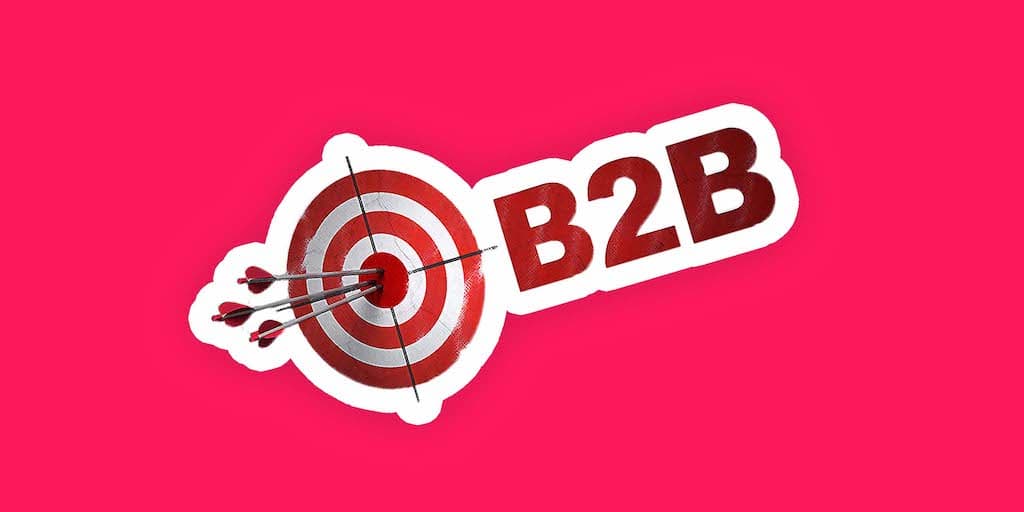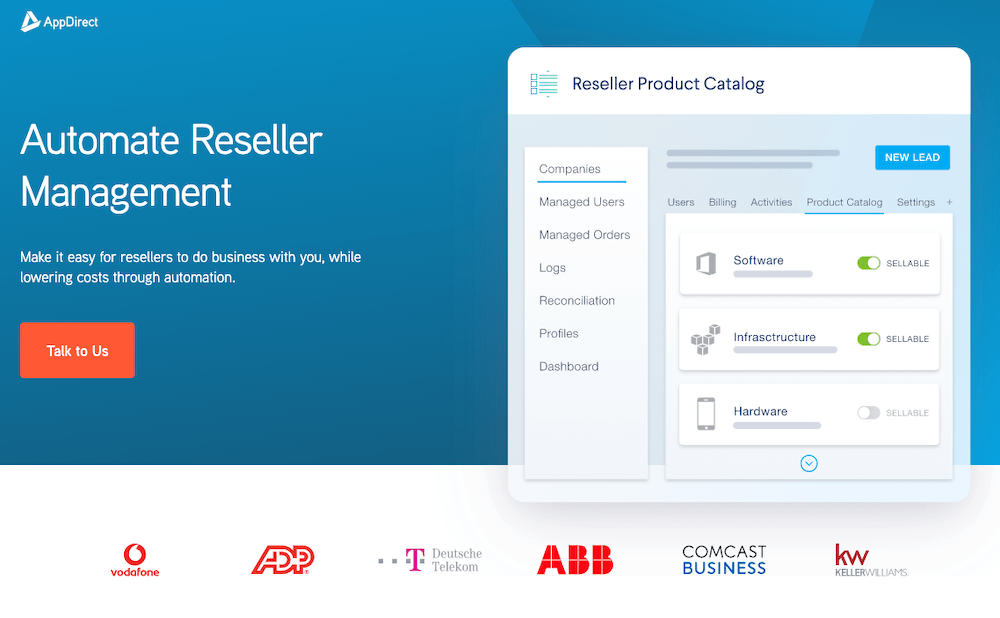5 best practices to design B2B landing pages that convert
The B2B space is full of generic landing pages offering "solutions" to the most generic audiences. Here are 5 best practices to avoid that.

Building a powerful B2B (business-to-business) landing page boils down to a fee basic but critical elements. If executed successfully, you can maximize the lead generation and sales potential of your product or service.
To do this, you must build trust with your client and demonstrate that you can help solve their business problems.
While there are many standard landing page elements that you need to incorporate, I’m here to show you the top 5 best practices that make B2B landing pages successful in 2021.
What is a "B2B" Landing Page?
A B2B landing page is a web page that is designed to turn business professionals and owners into customers. The goal is to engage with these prospects, build trust, and convince them that you have what they need.

Depending on your product, you may use the landing page to generate leads for your sales team to contact later or guide the customer through to a final purchase.
Landing pages need to be tailored to their target audience.
B2B prospects are different from B2C (business-to-consumer) visitors.
Programs, products, and services that a business uses must be considered carefully. For this reason, B2B buyers will spend more time coming to a decision than a typical B2C customer.
Traditional landing pages rely largely upon emotion to trigger a purchase. While B2B customers also make decisions based on emotion, they tend to be more logical. I’m going to help you tailor your landing page here.
B2B Best Practice #1: Focus on Solving a Business Problem
One of the biggest issues that I have found is landing pages tend to focus too much on the features of a product or service. This is a boring and unengaging way to promote what your business has to offer.
Nobody cares that your product can do X, Y, or Z. Businesses want to know how you can alleviate a pain point or improve their profitability.
Instead, focus on how your product or service solves a problem for your customer. Think about what challenges they face and how you can help alleviate them.
By taking this approach, you can capture their attention and get one step closer to converting them into paying customers.
- Write compelling headlines - The headline on your landing page will be one of the first things that your customer sees. Use this as an opportunity to make a bold statement that gives your customer a “Yes! That’s exactly what I have been looking for!” feeling.
- Get right to the point - Research shows that you have about 10 seconds to capture your reader’s attention with a value proposition. If you don’t immediately show them you have what they are looking for, they'll move on.
- Emphasize the Results - Let the numbers speak for themselves. If you have strong statistics to show the expected results, it will help the client visualize the benefits. Stating that your product will “Improve customer satisfaction” is weak. A stronger claim would be that your product will “Reduce customer wait times by 95 percent” based on your current daily operations.
B2B Best Practice #2: Design a Friendly Landing Page CTA
I can’t tell you how many landing pages that I've roasted that had great design and brilliant copy, but fell flat when it came to the CTA. Clients need to be told exactly what to do and what steps to take next.
For B2B landing pages, you may need to take a slightly different approach. One of the most critical elements of a successful landing page is the CTA.
But how you design and use your CTA will determine the number of leads you generate… Here's how you should do it:
- Clear CTA - Your call to action needs to be clear and direct. Leave no question as to what the next steps should be. If you want your customer to watch a demo video, tell them to do so.
- Simple process - Business owners and professionals are busy. They don’t have time to fill out 20 fields in a form for a product they may or may not even purchase. The more cumbersome you make the CTA, the less likely they are to take the next step. Opt for a simple way to gather basic information. You can always gather more details later in the process.
- Micro-commitments - Sometimes asking too much too soon will deter customers from moving forward. It’s much easier to get a business client to give their email address in exchange for an industry white paper than to have them commit to a 30-minute call with a sales representative.
- Set expectations - Make it crystal clear to your prospect what will happen next. B2B customers don’t like surprises. For example “Click here to get 3 quotes now” or “Provide your phone number and a representative can call you in the next 24 hours”.
- Multiple CTAs - This one might shock people and go against the conventional wisdom of landing page design. B2B customers take longer to decide on moving forward with a product or service. That means that your landing page will likely be engaging with people in different phases of the sale cycle.
B2B Best Practice #3: Consider the Entire Funnel
Successful landing pages focus on creating a funnel that targets a large number of viewers who can then be narrowed down to a smaller number of prospective customers.
I want to emphasize that too much focus is placed on the bottom point of conversion rather than the entire funnel process. Losing sight of the upper layers of the funnel could significantly reduce the number of leads:
- Early segmentation - Visitors to your landing page may come from different parts of a business organization and have different roles. Depending on this, you might need to offer customized landing pages for a select number of target audiences.
- Relationship Building - The top of the funnel is where the relationship starts. Businesses want to work with brands that they know and trust. Some buyers aren’t going to just buy from a person or organization they just met.
- Give Them a Reason to Return - Think about ways to give your prospects the incentive to return. For example, creating a short multi-day informational series can be a great way to keep your customer coming back over and over.
B2B Best Practice #4: Build Trust & Credibility
I can’t stress enough the importance of building trust and credibility with your target B2B audience.
When companies decide to do business with you, your product or service can have a positive or negative impact on their organization. For this reason, they want to have confidence that you will deliver on your promises.
This is especially true for professionals whose reputation is on the line for recommending the implementation of your product or service.
Fortunately, there are some easy ways to immediately build street cred:
- Top clients - If you have a solid list of major clients, create a space on your landing page to show off their logos.
- Testimonials - Client testimonials can be a powerful addition to your B2B landing page. It demonstrates that others have taken the plunge and are pleased with the outcome.
- Awards and affiliations - Create a list of awards, certifications, affiliations, and accreditations that apply to your company or product.
- Bring value - Business relationships are a two-way street. Creating ways to provide immediate value such as downloadable tools, ebooks, whitepapers, and free trials will give opportunities to build trust.
- Proactively answer questions - Think about the follow-up questions that your client will likely ask and think about ways to answer them. This will accomplish two things. First, it shows that you understand their challenge or problem. Second, you get them one step closer to acknowledging that they need what you are selling.
B2B Best Practice #5: A-B Landing Page Testing
You’re fooling yourself if you think you will design a landing page that will immediately bring in thousands of sales.
Even major brands struggle with getting things right the first time.
Create two versions of your landing page and see which performs better. Over time, make minor adjustments and see if they improve your conversion rate:
- Rewrite your headline - Sometimes a simple rewrite to your headline can keep visitors engaged in your page. Since this is one of the first elements that they see, this is likely where you are going wrong if your lead generation is especially low.
- Target different selling points - Your product or service may have 2-3 key features. Create different versions of your landing page that focus on each and see how the customers respond.
- Switch up the visuals - Elements like imagery and colors can immediately influence a prospect’s opinion about your landing page. Play sound with different colors, fonts, and photos.
Originally published Aug 13 2021
Frequently asked questions
What makes for a good B2B landing page in 2023?
A successful B2B landing page in 2021 will thoughtfully present information in a way that highlights the customer’s challenges or pain points instead of just listing the features or details about the product or service.
Is running 2 versions of landing pages a good thing?
Yes! With B2B landing pages, you may have different target customers for the same product. For example, if you are selling a software program, the sales and IT departments will have different needs.
What should a good B2B landing page include?
A good B2B landing page should be able to demonstrate that you understand your customer’s business, highlight the pain points you are trying to solve, have a strong call to action (CTA), and provide information that builds trust and credibility.
How can I improve my B2B landing page conversion?
A-B testing is a great way to learn and improve your landing page. By running two landing pages with different designs, layouts, and messaging, you can see what works and what doesn’t. Keep what gets strong responses, and eliminate what isn’t effective.